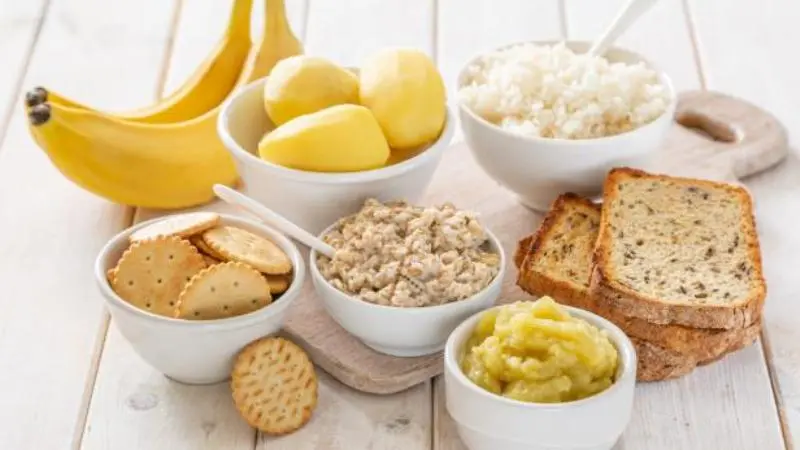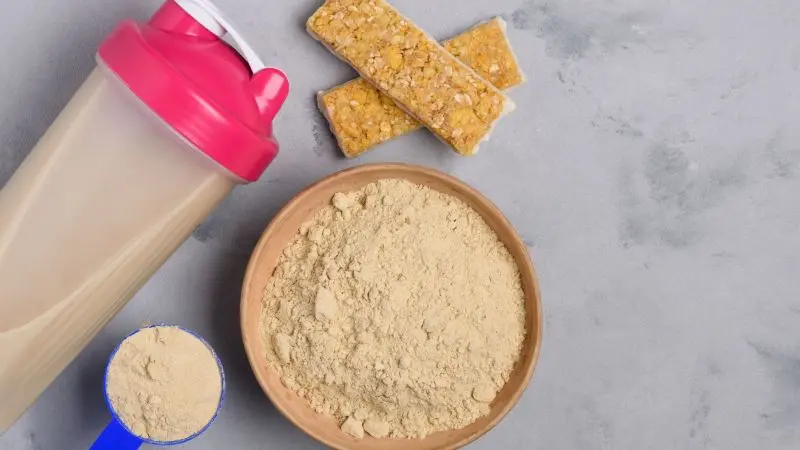The BRAT diet is a short-term eating plan often recommended for individuals experiencing gastrointestinal distress, such as vomiting, diarrhea, or stomach cramps. The name “BRAT” is an acronym that stands for Bananas, Rice, Applesauce, and Toast, which are the core foods included in this diet.
These foods are chosen for their gentle nature and low fiber content, making them easy to digest and less likely to further irritate the digestive system. In this comprehensive guide, we will explore each of the BRAT diet foods in detail and discuss their benefits.
1. Bananas
Bananas are a staple food in the BRAT diet for several reasons:
- Easily Digestible: Bananas are soft and easily digestible, making them gentle on the stomach.
- High in Potassium: During gastrointestinal distress, the body can lose significant amounts of potassium. Bananas are an excellent source of this essential mineral, helping to replenish depleted stores.
- Pectin Content: Bananas contain pectin, a soluble fiber that can help bulk up stools and reduce diarrhea.
2. Rice
Rice, particularly white or refined rice, is another crucial component of the BRAT diet:
- Binding Effect: White rice is low in fiber, making it less likely to aggravate an already sensitive digestive system. It can help firm up loose stools and reduce diarrhea.
- Gentle on the Stomach: Rice is generally easy to digest, providing a source of energy without putting excessive strain on the digestive system.
- Mild Flavor: The mild flavor of rice makes it appealing to individuals experiencing nausea or loss of appetite.
3. Applesauce
Applesauce is often recommended as part of the BRAT diet due to the following reasons:
- Pectin Content: Similar to bananas, applesauce contains pectin, a soluble fiber that can help bulk up stools and reduce diarrhea.
- Natural Sugar Source: When experiencing gastrointestinal distress, it’s essential to maintain adequate energy levels. Applesauce provides a natural source of sugar for energy without irritating the digestive system.
- Soft Texture: Applesauce has a smooth consistency, making it easy to swallow and gentle on the stomach.
4. Toast
Toast, typically made from white bread, is the final component of the BRAT diet:
- Mild and Bland: White bread is often better tolerated during gastrointestinal distress compared to whole grain bread, which can be higher in fiber and potentially more challenging to digest.
- Starchy Energy Source: Toast provides carbohydrates for energy without placing additional stress on the digestive system.
- Easy to Consume: The dry and crisp texture of toast can be soothing for an upset stomach, and it is often well tolerated by individuals experiencing nausea or vomiting.
5. Beyond BRAT: Other Foods to Consider
While the BRAT diet is primarily focused on the four staple foods, it’s important to transition to a more varied diet as soon as symptoms improve. Here are some additional gentle foods to consider:
- Cooked Vegetables: Steamed or boiled vegetables, such as carrots, green beans, or zucchini, can be introduced gradually as digestion improves.
- Lean Proteins: Once gastrointestinal symptoms subside, lean protein sources like skinless chicken, turkey, or tofu can be included in meals.
- Broths and Soups: Clear broths, such as chicken or vegetable broth, can provide hydration and electrolytes while being easy on the digestive system.
- Fruits: Low-fiber fruits like peeled and cooked apples or pears can be introduced slowly as digestion improves.
Conclusion
The BRAT diet, consisting of Bananas, Rice, Applesauce, and Toast, is a short-term eating plan often recommended for individuals experiencing gastrointestinal distress. These gentle foods are easy to digest and can help soothe the digestive system during episodes of vomiting, diarrhea, or stomach cramps.
While the BRAT diet can provide temporary relief, it lacks essential nutrients and should not be followed for an extended period. As symptoms improve, it’s crucial to reintroduce a balanced and varied diet. If you are experiencing persistent gastrointestinal issues, it is always best to consult with a healthcare professional for proper diagnosis and guidance.




